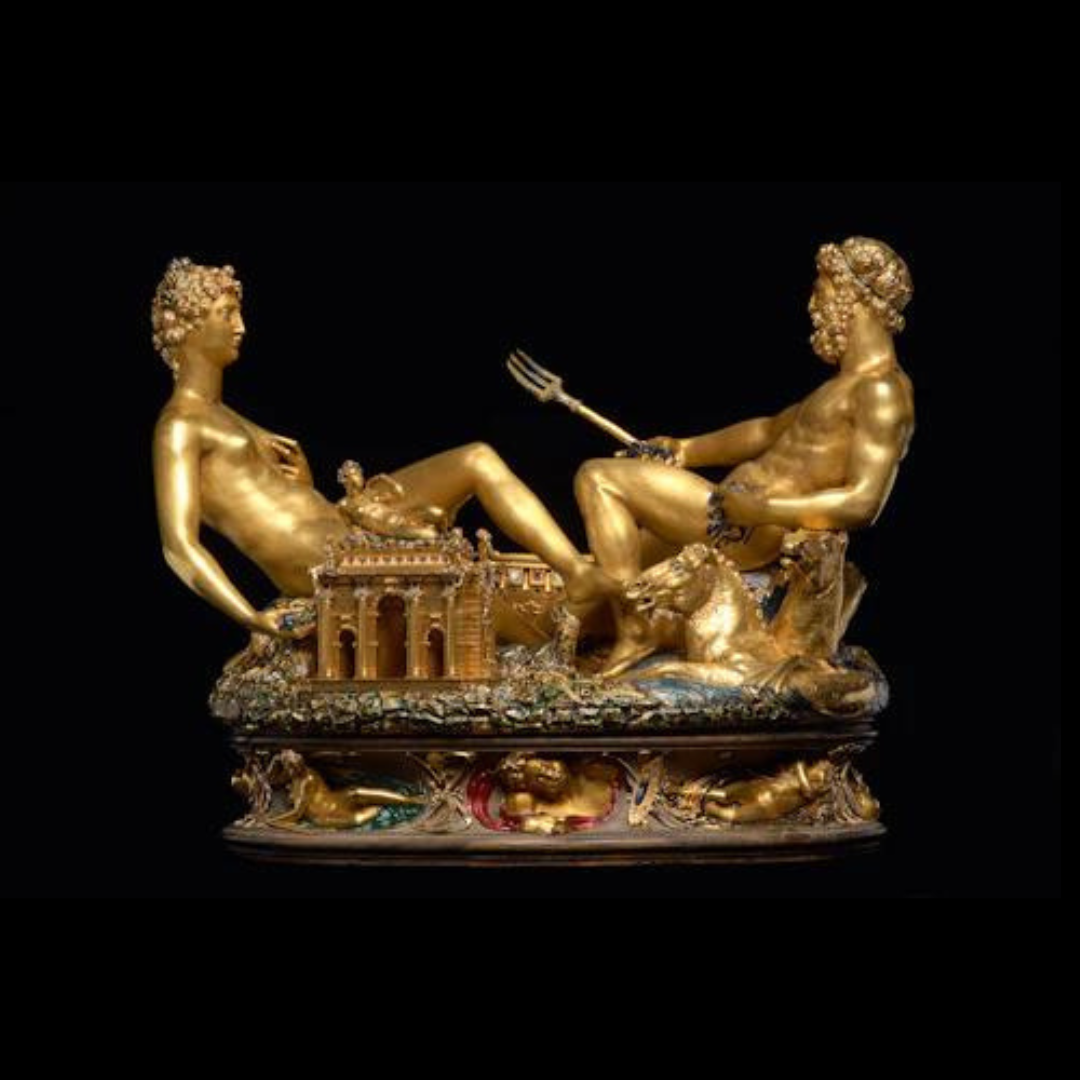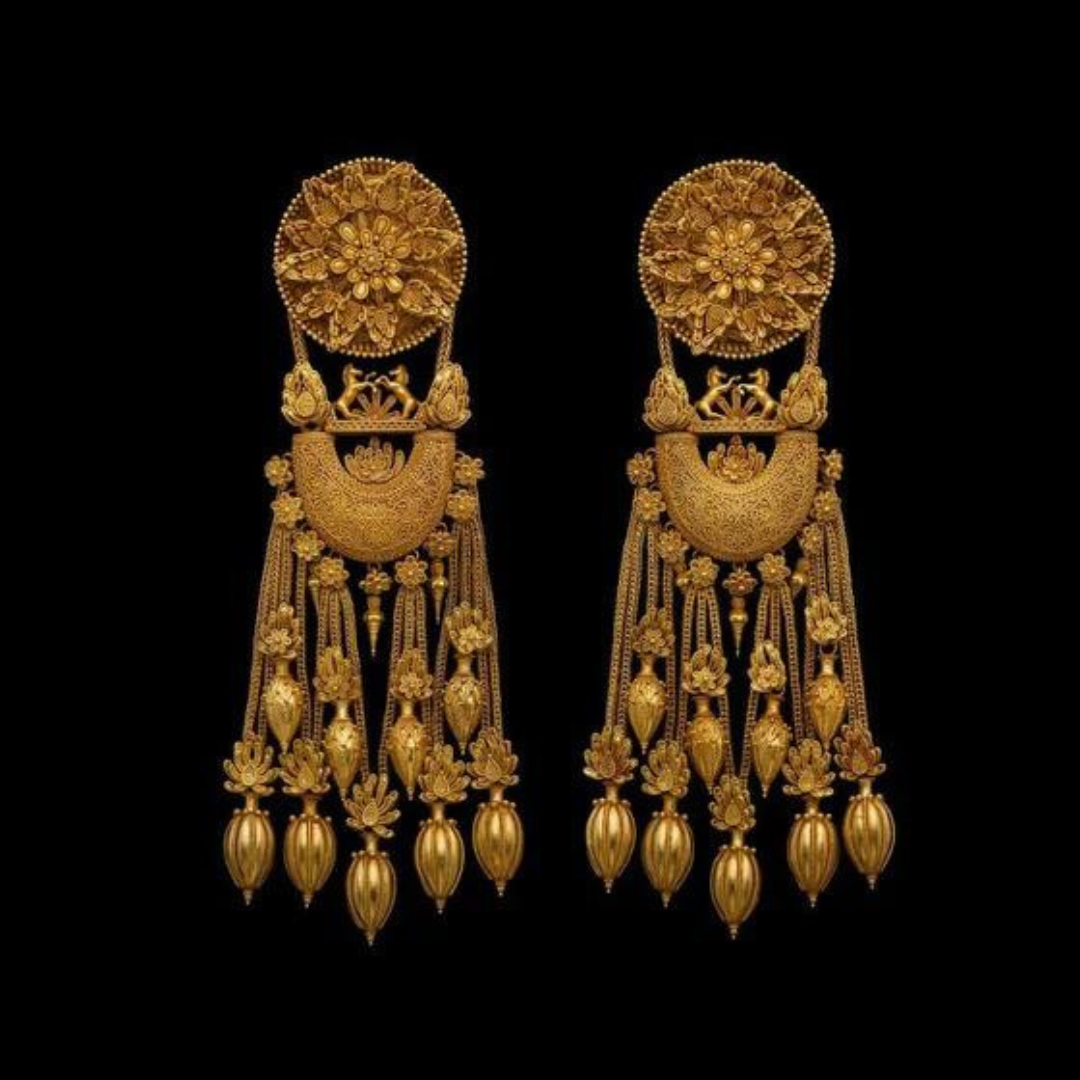
WITH VIVIENNE BECKER
GOLD, LIFE AND LUSTRE
Gold occupies a unique position in the history of civilisation; the earliest metal known to man, most likely discovered several thousand years ago, as a glinting nugget, amongst tree roots, along a river bed or in a hole dug for a well, it was prized as a sign of the divine, a heaven-sent talismanic object, possessing the sheen and colour, and the power, of the sun.
Through millennia, gold has enthralled and captivated mankind; it has induced lust, longing and gold-fever, it has made fortunes and fuelled fantasies, and changed the course of history. The quest for gold drove the Conquistadors, crazed by legends of untold treasures, including El Dorado, the Muisca chief who covered himself in gold dust, and threw sacrificial gold objects into Lake Guatavita.

Across cultures and civilisations, gold has been both treasure and talisman, currency and ornament, both worldly and otherworldly, intensely, sensually physical and also cerebrally metaphysical, a metaphor for the superlative, the ultimate achievement, and as the alchemists believed, the embodiment of the elixir of life, symbol of enlightenment and immortality.
These sandals were part of the funerary equipment belonging to one of three foreign wives of Thutmose III. They are made of thin gold sheet that would not have withstood normal wear; they were intended for funerary use only. The sandals are decorated with details intended to imitate the decoration on leather sandals.

The appeal of gold is timeless, enduring and universal; its captivating beauty and scarcity, together with its extraordinary attributes of immutability, malleability and ductility, mean that gold was lusted after, prized, revered in earliest antiquity, believed to be the flesh of the gods.
Gold was crafted with breath-taking virtuosity, across the known world, from Sumer, Mesopotamia and ancient Egypt, to Greece, Rome and Byzantium.
In ancient Egypt, gold was plentiful, and, closely associated with the all-powerful sun god, Ra. Lavish gold ornaments, culminating in the spectacular funerary mask of Tutankhamun, proclaimed power, prestige and wealth and soothed the path through the underworld.
The goldsmiths of antiquity were akin to priests, believed through their skills and rapport with gold to have a direct line to divine power.

Far away, the peoples of the pre-Columbian Americas, Aztecs, Incas, Quimbaya, Muiscas, Chimu and Sinu worshipped gold, believing it to be the sweat of the sun god, and created imposing, expressive ritual ornaments, anthropomorphic and zoomorphic, imbued with supernatural powers.
While in the expanses of central Asia, the warlike Scythians crafted jewels of extraordinary power and sophistication.
Perhaps most wondrous of all goldworkers of antiquity were the Etruscans, who, from around 8th century BC created glorious gold jewels and objects, decorated with granulation, as fine as frost, a technique that has mesmerised goldsmiths ever since.

In the Renaissance, the art of the goldsmith was considered noble, goldsmiths were revered, and occupied positions of eminence in society. Several of the most important sculptors and architects of the age, including Cellini, Brunelleschi and Ghiberti, originally trained as goldsmiths.
Virtuoso goldwork became the perfect expression of Renaissance richness, refinement and splendour, its stature as an emblem of wealth and power was amplified, through elaborate jewels, figurative hat badges and immense chains of office. Even today the gold chain remains a potent symbol of authority.
At the same time, the gold chain served as currency, signalling the vital role of gold as a store of wealth, for individuals and nations alike. As coinage, gold has formed the foundation of national economies, while gold reserves are held as financial assets in central banks around the. In India, gold jewellery is still collected by families, from the birth of a daughter as her bridal dowry.

This duality, of hard and soft values, of otherworldly beauty and down-to-earth monetary value, adds to the ageless allure of the noblest metal.
In Ghana, the two come together in the living legend of Ashanti gold: as the centre of the regional gold trade, at its height in the 17th and 18th centuries, the country garnered wealth and glory from gold, while the mystical metal was also believed to embody the spirit of Ashante chiefs. Gold was expertly crafted into ceremonial regalia most famous of which is the Golden Stool, the divine throne of Ashante kings.
Through the 19th century, with its epoch-making discoveries of deposits, in California in 1848, New South Wales, Australia, in 1851, South Africa, in 1886 and the Klondike Canada in 1896, gold continued to gather momentum as lusted-after, madness-inducing treasure, holding out dreams of untold riches, prosperity, power, status and stability.

Meanwhile, gold continued to captivate every generation of goldsmiths, jewellers, artists, artisans and sculptors, inspiring new techniques, new styles, new creative expressions that explore the myths, meanings and beauty of the metal.
Through jewellery, gold could show and share its warmth, tactility and sensuality and bring a sense of security and continuity.
Coloured gold, white, pink, yellow and even blue and green, is the hallmark of early 19th century jewellery, intricately worked into rococo clusters of shells, flowers, scrolls, leaves, exquisitely engraved, while the ‘cannetille’ work, inspired by Napoleonic embroidery, curled and coiled fine gold wire into filigree nests that enveloped fashionable large coloured gemstones.

By the later 19th century, discoveries of ancient sites, Pompeii and Herculaneum, Nineveh, and the Valley of the Kings, Egypt, parked a passion bordering on obsession for archaeological revival jewels.
Grand tourists and ladies of style and substance flocked to Castellani of Rome, the celebrated goldsmith specialising in revivalist jewels of both grandeur and authenticity. The vogue received huge impetus when, in 1871, the archaeologist Heinrich Schliemann excavated a hoard of gold jewels on a site he claimed was ancient Troy. He famously dressed his young wife as Helen of Troy in the lavish jewels he called Priam’s Treasure.

Around 1900, the art-jewellers of the Art Nouveau movement explored the soft, sensual fluidity and sculptural qualities, to imbue the metal with an emotive deliquescence.
In stark contrast, the modernists of the 1920s wrought white or ‘grey’ gold wrought into architectural graphic forms, inspired by the machine age. Since then, each era has brought its own expression to gold: from the revival of rich baroque sun-yellow gold by society jewellers, Verdura and Schlumberger, in the 50s and 60s, through the rugged, organic heavily textured gold, like tree bark or molten miasma, that defined the modern movement of the 1960s and 70s, led by British designer-jeweller Andrew Grima, to the high-octane glamour of 1980s jewels, epitomised by the work of Paloma Picasso for Tiffany & Co. In this way, goldwork has captured and reflected the social, cultural and artistic mood of the moment, signalling the quest for individual self-expression that has come to shape jewellery, and luxury in general in the 21st century.

Today, gold continues its glorious march through history, as the material of the moment, exuberant, powerful and sculptural, and the original recyclable luxury.
Now, in the caring, capable hands of SMO gold takes up a prime position in the universal mission, amongst artists, designers and jewellery connoisseurs everywhere to protect the planet and its peoples, and honour the earth that gave it life and lustre.

For Jewellery MAKERS
GOLD OF CHOICE
Whether you make individual gold pieces, jewellery findings & fittings or use gold as a complement to other materials, you could be creating with SMO Gold.
SMO gold can be supplied to makers & manufacturers directly from the approved LBMA refinery. Alternatively, it can be alloyed into grain, wrought product, rings, chain or castings for delivery to makers & artisans. We offer a comprehensive range of alloys & colours, and can custom make to specific requirements.
